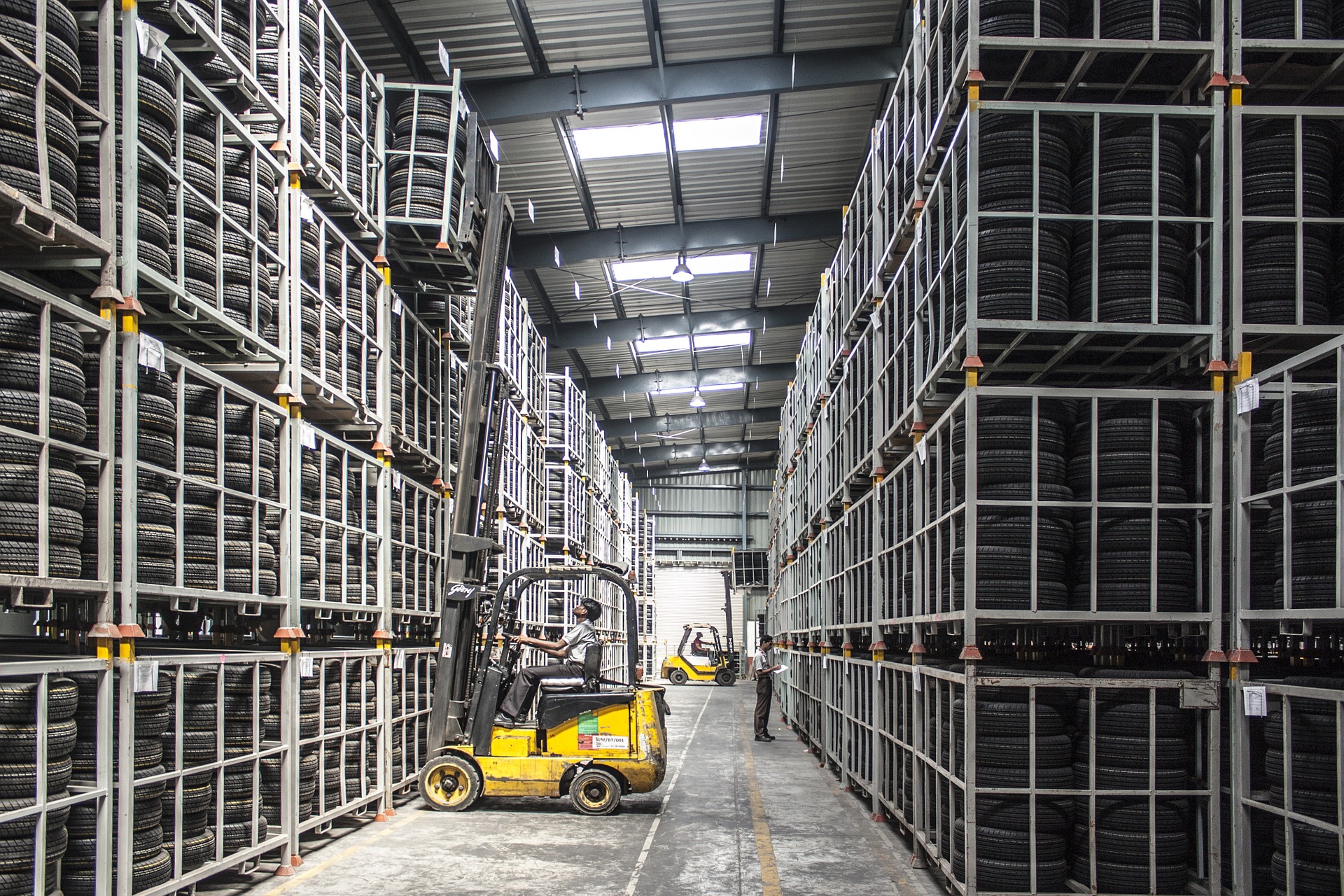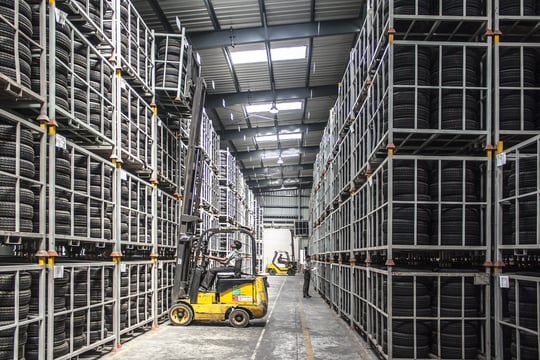
When trying to figure out how tall, wide and deep a warehouse should be, you need to address three key considerations:
- Storage capacity – how much inventory will the warehouse carry?
- Slotting capacity – how many SKUs will the warehouse’s pick lines stock?
- Throughput capacity – how much product will the warehouse receive and ship daily?
Each of these dimensions place their own demands on the required size of your warehouse.
Storage Capacity
This is a deceptively simple driver of warehouse space requirements. Figure out how many pallets your distribution center needs to store and how many pallets go in a rack. That will tell you how many racks you need and, in turn, how many square feet of warehouse space is required to house them.
Of course, there is much more to say about that formula. There is however one essential feature of storage capacity you should never overlook: the difference between gross and net storage capacity. That difference may be summarized in the following way:
It is impossible to use 100% of the gross storage capacity of a warehouse unless that warehouse receives and ships nothing. Empty spaces are necessary to a DC’s operations: receiving, staging, and moving product within the storage area require adequate working spaces, as do the picking, packing, and staging of outbound orders. In order to determine your warehouse’s net storage capacity, you must account for the required working space. That is why the art and science of determining your true warehouse storage requirements comes from properly profiling the inventory so that you can match that inventory to its ideal type of storage. For example, installing 5-deep pushback racking may result in a terrific gross storage capacity, but if the inventory profile consists of 10,000 SKUs with 1-2 pallets on hand, then you will never use more than 50% of that capacity.
Slotting Capacity
Many supply chains have grappled with SKU proliferation while working to lower inventory levels. The result is that pick lines and slotting – the size and arrangement of locations to pick from – have become more important in determining warehouse space requirements – often more than storage needs.
There are three fundamental aspects to sizing a pick line.
- Each item requires a dedicated space along the pick line, a slot. When deciding what size a given slot should have, the goal is to strike a balance between the objective of keeping the pick line as short as possible and that of avoiding excessive replenishment activity.
- The pick line must favour an order assembly strategy that minimizes labour and completes the order within the time frame set by customer service (e.g.: zone picking, batch picking, one-picker-one-order).
- The sequencing of product in the pick line must be such that the warehouse delivers assembled orders in a stable, product-sensitive way (e.g.: no crushables on the bottom of a pallet)
Throughput Capacity
When a warehouse works beyond its throughput capacity it loses its working space. For example, inbound and outbound pallets begin to clog operating aisles, slowing the movement through the warehouse to a crawl and creating difficult if not impossible conditions to access product in the racking.
For a warehouse to function, it needs that empty, working space. A DC’s operations include receiving, staging, and moving product within the storage area, as well as picking product, packing it, and staging outbound orders. All these operations are reliant on equipment that have spatial requirements such as minimum operating widths and turning radii. Failing to take these requirements into account will inevitably lead to suboptimal performances: as equipment will be unable to function at defined speeds, it will slow down labour and reduce the number of tasks achieved per hour.
Congestion is corrosive to warehouse productivity. Gridlock is the warehouse’s death knell. To avoid it, you must provide sufficient space to complete the number of hourly tasks by function – across all functions – to achieve the warehouse’s optimal throughput.
The length, width and height of a warehouse depend on its storage, pick line and throughput requirements. Each of these dimensions of warehouse space requirements influence what the total warehouse footprint should be.

